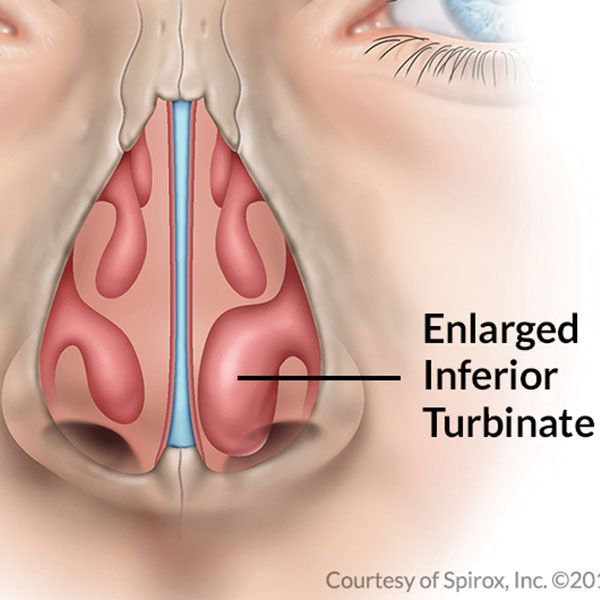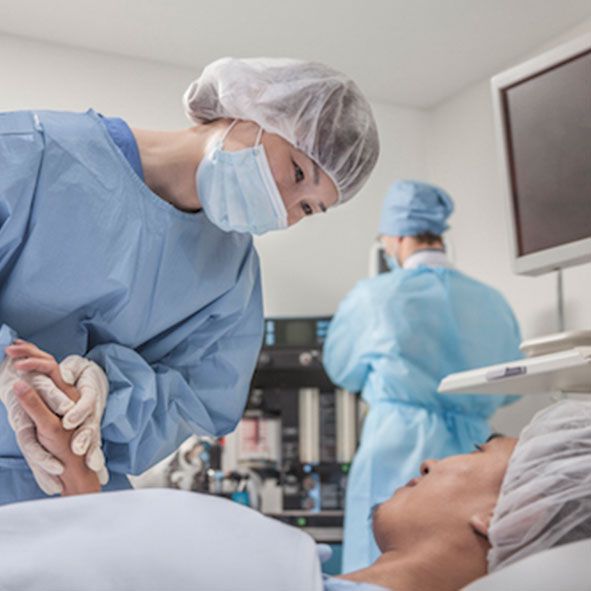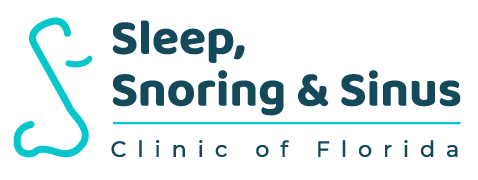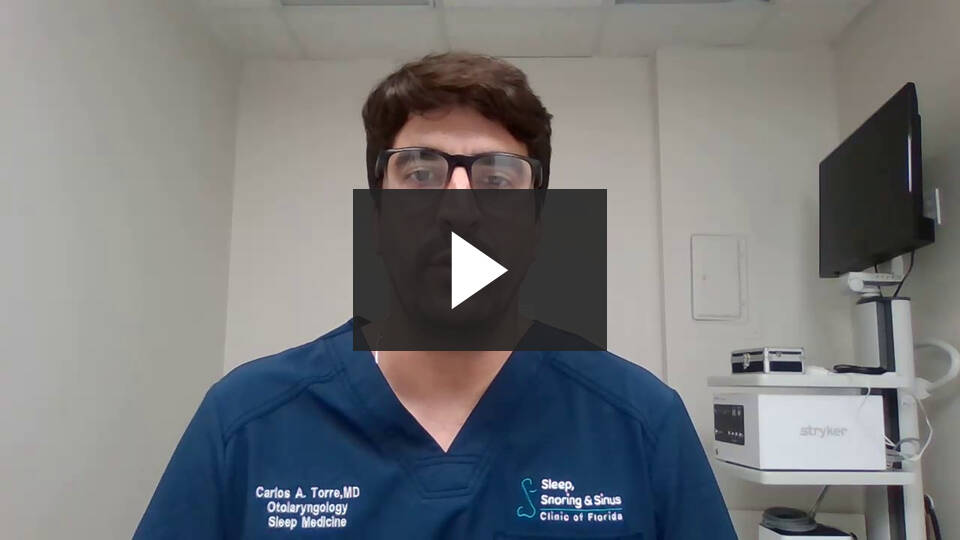Plantation Location
Coral Gables Location
Plantation Location
Pembroke Pines Location
Plantation Location
Pembroke Pines Location
Nasal turbinates and turbinate reduction
What are the nasal turbinates?
Located on the inside of the nose just upstream from the flare of the nostrils, the nasal turbinates are three pairs of long, thin bones and associated cartilage. The turbinates are lined with mucosal tissue that can expand or contract to help adjust the temperature, the moistness and the velocity of incoming air as we inhale.
What are hypertrophic turbinates?
This term means that the either the tissue lining the turbinates is swollen, or the bones themselves are enlarged enough to cause obstruction of the nasal airways.
What causes swollen turbinates?
In some people, the turbinates or their underlying structure (the nasal chonchae) are enlarged from birth. For many others, the turbinates become swollen because of allergy, bacterial or viral infection, exposure to environmental irritants like dust or chemicals, or altered air flow due to deviation elsewhere in the nasal airway.

Swollen Turbinates
How are swollen turbinates diagnosed?
An ear, nose & throat specialist (ENT), will ask questions about your medical history and conduct a physical exam that can include inspecting the airway with an endoscopic camera inserted through the nostril.
How are swollen turbinates treated?
If the cause of the hypertrophy is infection, allergy or environmental irritant, your doctor may recommend antibiotic for a bacterial infection, nasal decongestants or steroids to help reduce swelling, and a waiting period to see if the condition begins to improve. In persistent or chronic cases, your ENT specialist might recommend surgery to reduce the obstruction.
What surgeries are used in turbinate reduction?
There are several different approaches available, depending on the ENT's assessment of the problem. These include electrocauterization, radiofrequency reduction, microdebrider resection, partial resection and COBLATION◊.
What is a COBLATION turbinate reduction?
A COBLATION turbinate reduction is the use of a COBLATION wand to reduce the size of hypertrophic nasal turbinates.
Recovering from a turbinate reduction procedure
Following nasal turbinate reduction surgery, you can expect to make a full recovery, although you might experience discomfort, nasal stuffiness, and mild nasal drainage in the first few days following the procedure. Here's what to expect:
Recovery room and discharge from surgical center
After turbinate reduction, especially if the procedure requires general anesthesia, you will be monitored for a while, in a recovery area in the surgical center. When it's time to go home, a staff member or your doctor will go over specific instructions on how to take care of yourself until you're fully recovered. It's good for your full recovery and your peace of mind to have a copy of your instructions in writing, so don't hesitate to ask if you aren't offered written recovery instructions.
Postoperative expectations
Your nose will still feel congested due to swelling for as long as a few weeks after surgery but this will subside. Additionally, some bleeding may be experienced post operatively. If the procedure was conducted under general anesthesia, sometimes nausea or vomiting after surgery are to be expected, and if you experience these, you should eat and drink clear liquids. Lingering effects of anesthesia and pain medicine could cause dizziness or drowsiness after surgery.

Turbinate Reduction
Medications you may receive
You might receive a prescription for pain medication for any discomfort you feel. All pain medications must be taken as your doctor instructs. There could be additional medicine prescribed, including antibiotics to help fight any post-operative infection. It is also very common for your doctor to recommend a saline spray and/or saline rinse be used to ensure your nose remains moist to assist in healing.
Special instructions and restrictions
Discomfort, tenderness and some residual stuffiness in the nasal passages is not uncommon; these should ease up according to the schedule your doctor provides. You may receive advice to not to blow your nose or to avoid vigorous exercise in the first few days after the procedure.
Complications and when to report them to the doctor
Your doctor will caution you to report such complications as persistent or new bleeding at the surgical site. High fever, dizziness, or unanticipated nasal discharge are all reasons to contact the doctor's office for advice.
Follow up examination
The doctor will instruct you on whether to make a follow up appointment. It may be that you will need to return in 10 days to 2 weeks for one last check that the procedure is complication-free and that recovery is proceeding as expected.
All information provided on this website is for information purposes only. Every patient's case is unique and each patient should follow his or her doctor's specific instructions. Please discuss nutrition, medication and treatment options with your doctor to make sure you are getting the proper care for your particular situation. If you are seeking this information in an emergency situation, please call 911 and seek emergency help.
Make An Appointment
Call us and Send us a message!
Contact Us
Thanks for your message!
I'll get back to you as soon as I can.
Please try again later.
CONTACT US
Plantation:
100 NW 82nd Ave, Suite 405, Plantation, FL 33324
Phone:
(305) 432-9785
Fax: (786) 946-2831
Pembroke Pines: 10071 Pines Blvd, Suite C, Pembroke Pines, FL 33024
Phone:
(954) 628-8453
Fax: (954) 437-6252
OUR HOURS
Monday: 8am - 4pm
Tuesday: 8am - 4pm
Wednesday: 8am - 4pm
Thursday: 8am - 4pm
Friday: 8am - 4pm
Saturday: Closed
Sunday: Closed
QUICK LINKS
Service Areas: Miami-Dade County, Broward County, Palm Beach County

